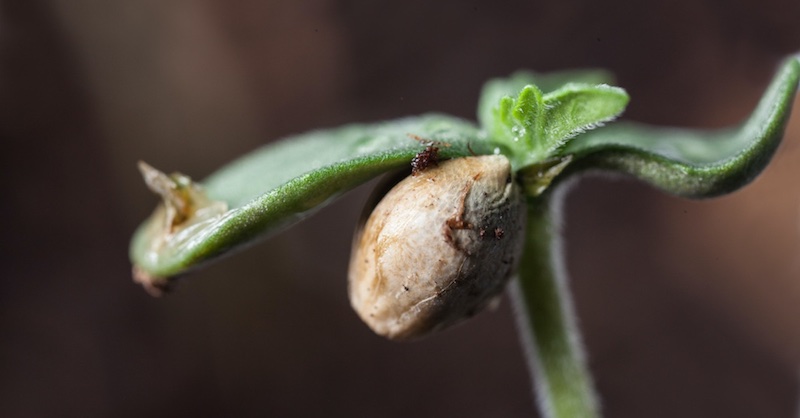
The time when a cannabis grow is at its most vulnerable is in the first few weeks after the seeds have germinated. And this is because tender cannabis seedlings can suffer from overheating, lack of food, lethal fungi, excess irrigation… Yes, marijuana is a robust and vigorous plant that can withstand many setbacks, but to provide it with some of that vigour, you need a solid foundation: in other words, a healthy seedling stage that allows it to develop in the best way possible.
The cannabis seedling stage is the most sensitive moment in the growing process. It comes after the germination phase and before the vegetative and flowering stages. It is during this key period that the first true roots and fan leaves appear.
These shoots thrive in moderately warm and very humid conditions, but they don’t tolerate stress very well, so they need a lot of protection to become robust vegetative plants. Make sure you provide your seedlings with the right amount of TLC, and you’ll be ready to obtain abundant yields a few months later.
What’s the seedling phase?
The seedling phase is the second stage of growth of cannabis, and it covers the first 2 to 3 weeks after germination. It starts when you place a germinated seed in a growing medium, and the radicle gives way to a stem with two rounded leaves called cotyledons. These cotyledons contain nutrients, and their function is to enable the feeding of the newly germinated plant, so that it can perform photosynthesis while the first pair of true leaves grows, developing leaflets with serrated edges.
As the seedling develops in the growing medium, its root system expands below ground starting from the main root, which branches into secondary and tertiary roots. During its first 2 weeks of life, a cannabis seedling should significantly increase in height and size: by the end of this period, it should have developed 3 to 4 pairs of true leaves. As it enters the vegetative phase, this little plant will no longer be considered a seedling.
What does a healthy seedling look like?
Rapid growth and a bright green colour are both indicative signs of a healthy seedling. The stem will initially be thin, but it should be able to stand upright: a robust stem denotes good cell structure and overall health. The leaves should be curving slightly upwards as they look for light and should display a lush green colour with no signs of discoloration, wilt, or damage.
Well-formed seedlings have uniform growth patterns with a balanced distribution of leaves, branches, and stems. This symmetrical structure ensures adequate exposure to light and reduces the risk of competition between different parts of the plant, allowing the seedling to optimise the allocation of resources.
What types of problems can seedlings come across?
Unfortunately, many things can happen during those two weeks. In addition to possible issues related to pests or diseases, the most common problems that can affect seedlings are either excessive or insufficient irrigation, along with nutrient, temperature, and lighting issues. All of these are preventable setbacks that any experienced grower will be able to avoid effectively; but here are the most common causes and solutions in case you end up having to deal with any of them:
Read the rest of the article on Kannabia's blog
